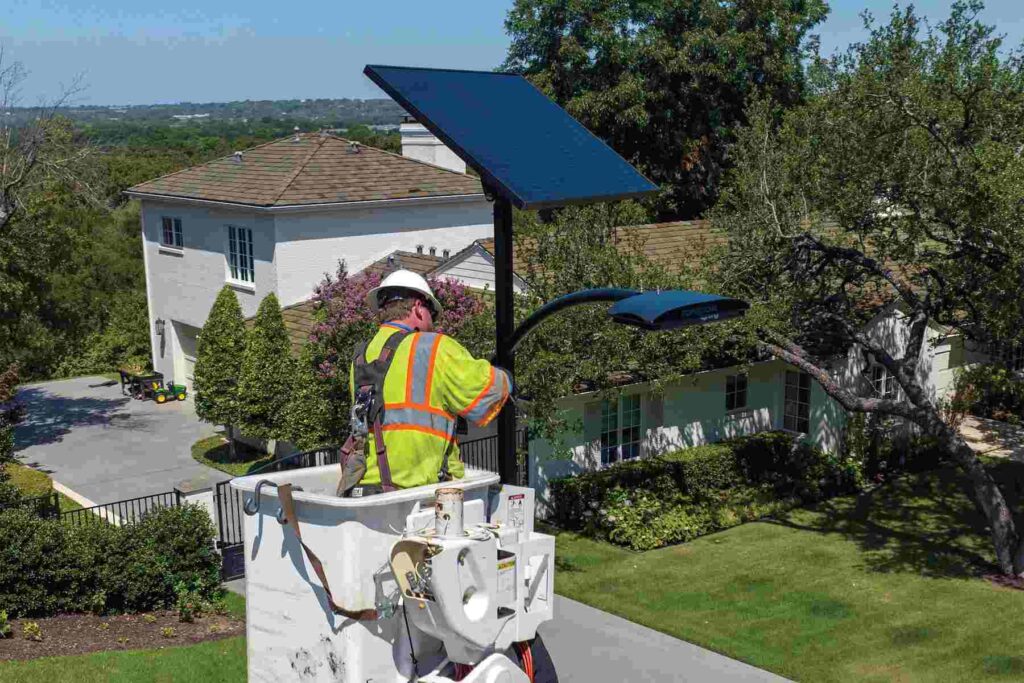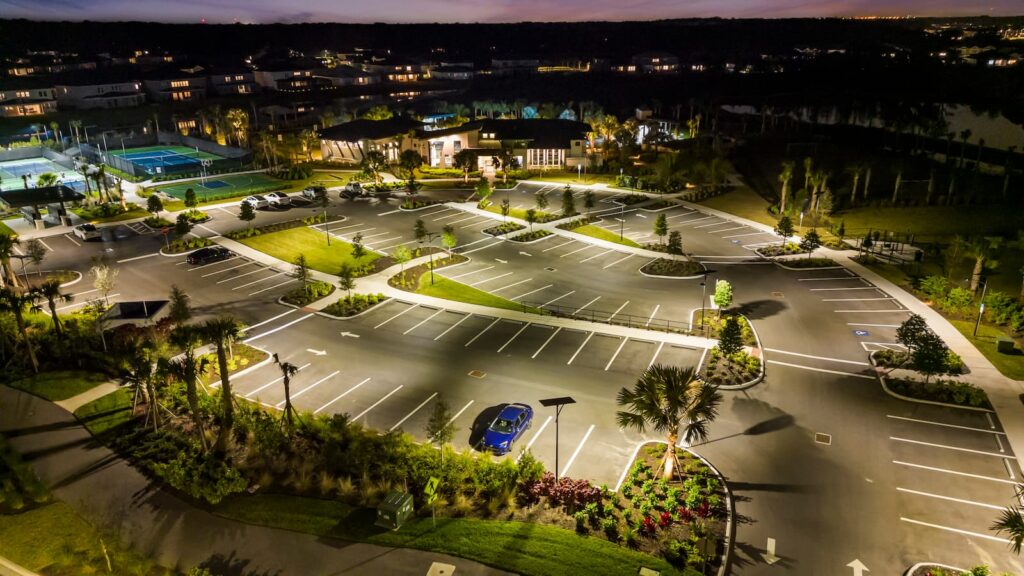Understanding the True Cost of Solar Parking Lot Lighting
When evaluating solar parking lot lighting, cost is often the first—and most complex—question. It’s easy to focus on the upfront number, but that only tells part of the story. For municipalities, tribal agencies, and commercial developers, the real value lies in long-term performance, maintenance savings, and avoided infrastructure work.
Unlike grid-tied systems, which often carry ongoing utility bills and trenching expenses, solar-powered lights operate independently—eliminating many hidden or recurring costs. But not all solar systems are designed equally. Materials, battery quality, wind zone compliance, and local climate can all affect pricing.
Systems like Fonroche SmartLights are engineered to provide reliable lighting and cost predictability over the long term—offering a clearer picture of total ownership, not just initial spend.
Table of Contents
Upfront Costs: What You’re Actually Paying For
The upfront cost of a commercial-grade solar parking lot light typically ranges from $3,000 to $5,000 per unit, depending on site conditions and system specifications. While this may appear higher than the cost of a traditional grid-tied fixture, it’s important to look at what’s included—and what’s avoided.
A complete solar lighting system includes:
- The pole (AASHTO-rated for wind zone compliance)
- An LED fixture with optics tailored for uniform coverage
- A solar panel
- A long-life battery (often with 10+ years of autonomy)
- Smart controls or pre-set lighting profiles
Just as important is what’s not required: trenching, wiring, transformers, or electrical permitting. Those costs—often hidden during early budgeting—can add thousands to grid-tied installations.
Fonroche SmartLights, for example, are designed as fully integrated systems, meaning fewer components to manage and no need to source parts from multiple vendors. That streamlines procurement and ensures each unit is engineered for performance from day one.

What Drives Solar Lighting Costs?
Not all solar lighting systems are priced the same—and with good reason. Several key factors influence cost, many of which are tied directly to performance and site-specific needs.
- Battery capacity: Larger batteries support longer run times and multi-day autonomy, especially important in cloudy or winter-prone regions. Systems like Fonroche SmartLights use climate modeling to size batteries for 365-night reliability.
- Pole height and wind zone: Taller poles or high-wind areas require stronger, AASHTO-compliant structures and deeper foundations.
- Lumen output: Brighter fixtures cost more, but they also reduce the number of poles needed across a large lot.
- Smart features: Dimming profiles, motion sensors, and remote monitoring can add value—but also add to initial cost.
- Site complexity: Locations with difficult terrain, permitting constraints, or sensitive environments may influence hardware and installation methods.
Well-engineered systems match components to conditions, avoiding both underperformance and overbuilding—two common sources of cost overruns.
How Solar Compares to Grid-Tied Lighting Over Time
At first glance, grid-tied lighting may seem less expensive—but the long-term math often tells a different story. Once installation, maintenance, and utility costs are factored in, solar can offer a lower total cost of ownership, especially after year three to five.
Here’s how it typically breaks down over 10 years:
| Cost Category | Grid-Tied System | Solar System (e.g., Fonroche SmartLight) |
| Trenching & Wiring | $2,000–$4,000 per pole | $0 |
| Energy Costs (10 yrs) | $2,000–$3,500 | $0 |
| Annual Maintenance | $200–$500 per year | Minimal to none |
| Battery or Component Swap | N/A | After 10–12 years (planned) |
| Total 10-Year Cost (est.) | $6,500–$9,000+ | $3,000–$5,000 |
Solar systems like Fonroche SmartLights eliminate energy bills and require no underground infrastructure—removing two of the biggest variables in public lighting budgets. And with batteries designed to last 10+ years, planned costs remain predictable well into the next capital cycle.
Why Fonroche SmartLights Offer Predictable Costs and Savings
For public agencies and developers managing long-term assets, unpredictability is often the most expensive variable. That’s why Fonroche SmartLights are designed not just for performance—but for financial clarity over the full system life.
Each system is fully integrated: solar panel, LED fixture, battery, and AASHTO-compliant pole are engineered to work together in the field. This reduces installation time, simplifies procurement, and minimizes compatibility issues. Batteries are rated for 10–12 years, meaning no surprise swap-outs or early-life degradation.
Because the systems operate 100% off-grid, there are no energy bills, no trenching failures, and no unexpected service calls due to outages or utility-side problems. Everything is designed to deliver consistent light, with consistent cost, year after year.

Price Is One Thing—Value Is Another
The true cost of lighting goes beyond fixtures and poles. It includes every hour of trenching, every line item on a utility bill, and every maintenance call that could have been avoided. That’s why solar parking lot lights aren’t just about going off-grid—they’re about building smarter from the start.
Systems like Fonroche SmartLights offer more than energy savings. They provide a stable, predictable path to long-term value—with fewer surprises and greater resilience.
Ready to build your lighting budget with confidence? Let’s help you get the numbers right—before you break ground, connect with Fonroche today.

